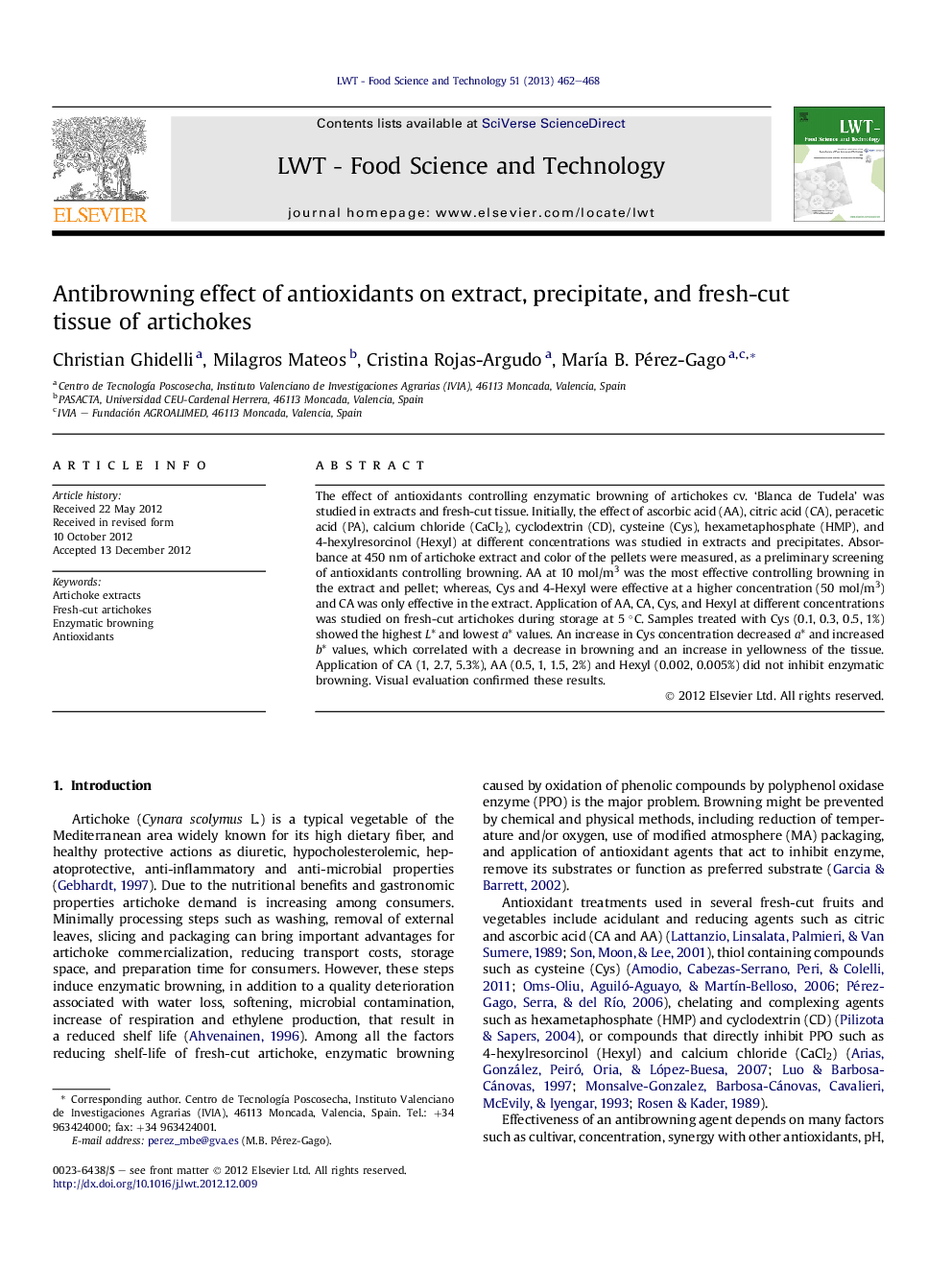| Article ID | Journal | Published Year | Pages | File Type |
|---|---|---|---|---|
| 4563945 | LWT - Food Science and Technology | 2013 | 7 Pages |
The effect of antioxidants controlling enzymatic browning of artichokes cv. ‘Blanca de Tudela’ was studied in extracts and fresh-cut tissue. Initially, the effect of ascorbic acid (AA), citric acid (CA), peracetic acid (PA), calcium chloride (CaCl2), cyclodextrin (CD), cysteine (Cys), hexametaphosphate (HMP), and 4-hexylresorcinol (Hexyl) at different concentrations was studied in extracts and precipitates. Absorbance at 450 nm of artichoke extract and color of the pellets were measured, as a preliminary screening of antioxidants controlling browning. AA at 10 mol/m3 was the most effective controlling browning in the extract and pellet; whereas, Cys and 4-Hexyl were effective at a higher concentration (50 mol/m3) and CA was only effective in the extract. Application of AA, CA, Cys, and Hexyl at different concentrations was studied on fresh-cut artichokes during storage at 5 °C. Samples treated with Cys (0.1, 0.3, 0.5, 1%) showed the highest L* and lowest a* values. An increase in Cys concentration decreased a* and increased b* values, which correlated with a decrease in browning and an increase in yellowness of the tissue. Application of CA (1, 2.7, 5.3%), AA (0.5, 1, 1.5, 2%) and Hexyl (0.002, 0.005%) did not inhibit enzymatic browning. Visual evaluation confirmed these results.
► Antioxidants were tested in artichoke extracts and precipitates (in vitro studies). ► Effective antioxidants in in vitro test were tested on cut tissue (in vivo studies). ► PA, CaCl2, CD, and HMP were not effective in in vitro studies. ► AA, CA, and Hexyl damaged artichoke tissue at high concentrations. ► 0.5% Cys extended shelf life of fresh-cut artichokes.
